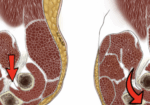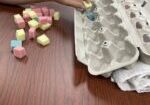Carpal Tunnel Syndrome: How does traditional hand therapy compare with neurodynamic therapy?
Filed under Treatments
Hamzeh, H., Mohammad, M., Alghwiri, A., & Hawamdeh, Z. (2021). The long-term effect of neurodynamics vs. exercise therapy on pain and function in people with carpal tunnel syndrome: A randomized parallel-group clinical trial. Journal of Hand Therapy, 34, 521-530.
The Skinny:

Carpal tunnel is the most common peripheral nerve compression problem. There is now some evidence supporting conservative management over surgical. This makes it a reasonable, potentially cost-saving option over surgery. There is limited information as to which conservative options are the most beneficial. This study looked to compare two different therapy approaches, including traditional exercise therapy and neurodynamics therapy. Hand Therapy for Carpal Tunnel Syndrome Exercises included nerve glides, tendon glides, and soft tissue mobilization vs. neurodynamic therapy, which included using specific manual techniques to change the mechanical characteristic around the nerve.
In the Weeds:
A randomized parallel-group clinical trial was completed. Twenty patients were in the traditional group, and twenty-one patients were in the neurodynamics group. Both groups completed a 60-minute treatment session per week and were prescribed daily exercises depending on if they were in the traditional vs. neurodynamic group. Please see the table below from the study of explanation of neurodynamic activities.
Bringing it Home:

Outcome measures were obtained at the 1-month follow-up and the 6 months follow-up. Outcome measures include the Boston Carpal Tunnel Syndrome Questionnaire, QuickDash, Wrist Range of Motion, and hand Hand Grip Strength. The neurodynamics group demonstrated improvement in all outcome measures. No patient that completed the study needed surgery after treatment. Both treatment options lead to improved strength and function and decreased pain; however, the neurodynamics group showed better results in all outcome measures.
Rating:
The study would be rated 4/5. There was no comparison between no treatment option; therefore, we do not know how patients would have done with natural recovery. Additionally, no patients in the study had severe carpal tunnel symptoms. Also, the study size was relatively small, and it is also difficult to gauge patients’ compliance with home exercise programs.
1 Comment
Leave a Comment
More To Read
Splinting Options for Stiff Finger Joints
Following an injury to the proximal interphalangeal joint, there is often a loss of range of motion, typically in both the flexion and extension planes. Therefore, we have compiled a list of helpful splinting options for stiff finger joints. To Improve PIP Joint Flexion Flexion Wrap with Elastic Tape (Coban): This is a very easy…
Read MoreTrigger Finger… Quick and Dirty!
This is for you… Hand Therapists! Stenosing tenosynovitis, otherwise known as trigger finger, is a common condition affecting children and adults of all ages. Fast Facts Trigger finger usually occurs at the A1 pulley It occurs with inflammation of the tendons and sheaths of fds and fdp The digit can lock in both flexion and…
Read MoreNew Distal Bicep Tendinopathy Provocative Test for Hand Therapist
Caekebeke, P., Schenkels, E., Bell, S. N., & van Riet, R. (2021). Distal biceps provocation test. The Journal of Hand Surgery. The Skinny: These surgeons were looking for a provocative test for distal bicep tendinopathy (distal biceps tendonitis test), specifically partial tears, that was more sensitive and specific. Complete tears are more easily tested in…
Read MoreBrachial Plexopathy Case Example in Hand Therapy
Brachial Plexopathy Case Example in Hand Therapy (plexopathy examples) One of the recent cases we have seen is a 13-year old with a brachial plexus injury. We are seeing the patient post-surgery for tendon transfers to increase functional use of his left upper extremity (LUE). Before the surgery, he could not extend the wrist and…
Read MoreSign-up to Get Updates Straight to Your Inbox!
Sign up with us and we will send you regular blog posts on everything hand therapy, notices every time we upload new videos and tutorials, along with handout, protocols, and other useful information.







Did the groups also wear night splints ?